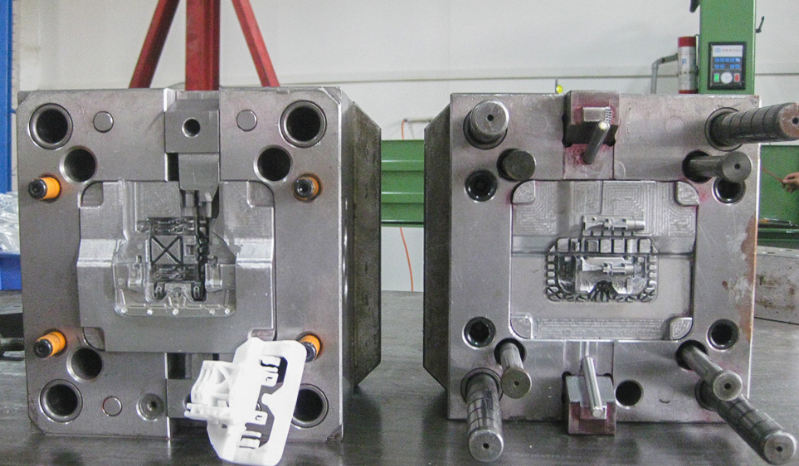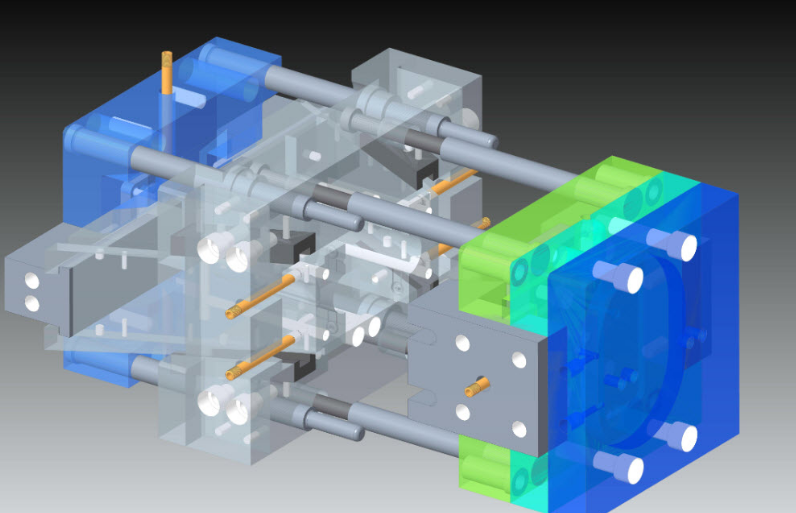Design for injection molding by considering draft angles, uniform thickness, fillets, gate placement, and minimizing undercuts.
Fundamentals of Injection Molding Design
Key Principles of Injection Molding

Understanding the core principles of injection molding is essential for effective design. These include:
Uniform Wall Thickness: Ensuring wall thickness is consistent to avoid defects like warping or sink marks. Ideal thickness ranges from 1.2mm to 3mm for most materials.
Gate Location: Strategic placement of gates for optimal flow of material into the mold.
Ejection System Design: Designing an efficient ejection system to prevent part damage during removal.
Adhering to these principles helps in reducing manufacturing issues and improving the overall quality of the final product.
Understanding Material Behavior in Injection Molding
Different materials exhibit distinct behaviors in injection molding:
Thermal Properties: High-temperature plastics require molds designed to withstand higher temperatures.
Shrinkage: Each material has a specific shrinkage rate post-molding, influencing the final part dimensions.
Flow Rate: The material’s flow rate determines how it fills the mold, impacting the design of thin-walled sections.
Selecting the right material is critical in achieving the desired quality and functionality of the part.
The Role of Mold Flow Analysis in Design
Mold flow analysis is a crucial tool in injection molding design, offering insights into:
Fill Pattern: Predicting how the material will fill the mold, helping to identify potential air traps or short shots.
Cooling Time and Temperature: Analyzing cooling times to optimize cycle times and prevent defects.
Warp Analysis: Predicting areas prone to warping to modify the design accordingly.
Incorporating mold flow analysis can significantly enhance the efficiency and quality of mold design, reducing the risk of costly rework.
Designing for injection molding requires a deep understanding of both the material properties and the molding process itself. These fundamentals lay the foundation for creating efficient, high-quality molds.
For more comprehensive information on injection molding design, visit the Injection Molding Wikipedia page.
Designing for Moldability
Designing for moldability is critical in injection molding to ensure the manufacturability and quality of the final product. Here’s a detailed breakdown of key design aspects:
| Design Aspect | Details | Best Practices | Impact on Moldability |
|---|---|---|---|
| Optimizing Wall Thickness for Uniformity | Ensuring consistent wall thickness to avoid defects like warping or sink marks. | Ideal thickness is typically 1.2mm to 3mm. Avoid sudden changes in thickness. | Uniform wall thickness ensures even cooling and reduces stress, improving part quality. |
| Incorporating Draft Angles for Easy Ejection | Draft angles allow easy removal of the part from the mold. | Minimum draft angle of 0.5 degrees for smooth surfaces and 1-2 degrees for textured surfaces. | Adequate draft angles prevent damage to the part during ejection, enhancing mold efficiency. |
| Design Strategies for Undercuts and Overhangs | Undercuts and overhangs require special design considerations for moldability. | Use of side-actions, lifters, or collapsible cores to form undercuts. | Careful design of undercuts and overhangs ensures moldability without compromising part functionality. |
These design considerations play a pivotal role in the success of the injection molding process. Adhering to these best practices leads to smoother production runs and higher-quality parts, while neglecting them can increase costs due to defects and complex mold mechanisms.
For more insights into designing for moldability, you can explore the Injection Molding Design Wikipedia page.
Material Selection in Design for Injection Molding
Choosing the Right Resin for Your Application
Selecting the appropriate resin is a critical decision in the injection molding process. Factors to consider include:
End-use Application: High-stress applications might require stronger materials like ABS or polycarbonate.
Aesthetic Requirements: For transparent parts, materials like acrylic or clear polystyrene are ideal.
Cost Considerations: Polyethylene and polypropylene are cost-effective for large-scale production, but may not offer the strength of more expensive resins.
The choice of resin significantly impacts the product’s performance and durability.
Impact of Material Properties on Design Considerations
Material properties dictate key design aspects:
Shrinkage: Different materials shrink at different rates. For instance, nylon shrinks more than polyethylene, affecting the final size and fit of parts.
Melt Flow Index (MFI): Materials with a high MFI fill the mold more easily, suitable for intricate designs. Low MFI materials are better for stronger, thicker parts.
Thermal Properties: High-temperature materials require molds that can withstand these conditions without deforming.
Understanding these properties helps in designing parts that meet both functional and aesthetic requirements.
Balancing Cost and Performance in Material Selection
Optimizing the balance between cost and performance is crucial:
High-Performance Resins: Materials like PEEK offer exceptional strength and temperature resistance but come at a higher cost.
Economical Options: Commodities like ABS provide a good balance between performance and cost for a wide range of applications.
Making informed material choices can lead to significant savings while ensuring product quality.
The selection of the right material is fundamental to achieving the desired outcome in injection molding, influencing everything from the manufacturing process to the final product characteristics.
To delve deeper into materials used in injection molding, visit the Plastics Material for Injection Molding Wikipedia page.
Testing and Prototyping in Design Development
Importance of Prototyping in Injection Molding

Prototyping is a crucial step in injection molding, serving several purposes:
Functionality Testing: Prototypes help in verifying design functionality, ensuring parts meet required specifications.
Identifying Design Flaws: Early detection of design issues, potentially saving costs and time in later stages.
Stakeholder Feedback: Allows stakeholders to assess the product’s look and feel, providing valuable feedback for improvements.
Investing in prototyping can significantly enhance the final product’s quality and functionality.
Testing Methods for Injection Molded Parts
Various testing methods are employed to ensure part quality:
Dimensional Accuracy Testing: Using tools like CMM (Coordinate Measuring Machine) to ensure parts meet dimensional specifications.
Material Testing: Conducting tests like tensile strength, impact resistance, and flexibility, especially important for high-performance applications.
Functional Testing: Simulating real-world usage to ensure the part performs as intended under actual operating conditions.
Regular testing throughout the development process helps in maintaining quality standards and meeting performance criteria.
Iterative Design: Refining Through Feedback
The iterative design process is essential in injection molding:
Design Iterations: Based on testing results and feedback, design adjustments are made, improving the part’s performance and manufacturability.
Cost-Effective Modifications: Early-stage adjustments are generally less costly compared to changes made after tooling.
Finalization: The design is finalized only after multiple iterations prove successful in meeting all requirements.
Iterative design, guided by continuous testing and feedback, leads to a more refined, functional, and cost-effective product.
Prototyping and testing are vital components of the injection molding design process, ensuring the final product not only looks good but also performs exceptionally well.
For a more detailed understanding of testing and prototyping in injection molding, explore the Injection Molding Testing Wikipedia page.




